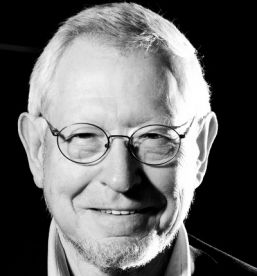The love affair began in 1973 when, as a consultant to the UN, he started working in developing nations. Sadowsky seemed to have a passion for helping such countries, and that passion only grew with his experience. He visited 35 nations and ran projects in 20-30 others before the Internet was established, and he has continued his Internet-related work in multiple developing countries since then.
He served as the network engineer for the very first population census ever done in China, and ensured that the Chinese government used the appropriate software to properly analyze the results of that census. Of the several visits he made to China between 1982 and 1986, he recently said, “The question now was, how do you put that data together to help the government design policies that will really help people? How do you get people to understand what uses can be made of all that information?”

India was another developing country where he helped people use information technology – in this case, to make better decisions about water conservation and usage. But it was the African continent that perhaps held the greatest interest for Sadowsky. There, he helped introduce networking in some 20 nations.
“South Africa had taken censuses before 1974, as had Egypt and a few other north African nations, but the countries that lay in between them had never done so, and their governments didn’t yet understand the importance of gathering and organizing such data,” he said. In introducing census and networking capabilities in sub-Saharan Africa, he and his UN team helped them to do just that.
In 1979, Sadowsky’s team scored another first when they introduced microcomputers into Africa. “In Cape Verde, which had a population scattered among many islands, a mainframe wouldn’t be efficient,” he recalls. “So we put a cluster of microcomputers there, so that people in all parts of the country could communicate, no matter where they lived.”
Later, he extended the use of microcomputers to the Comoros and Mauritania, as well.
He worked for the UN till 1986, then served as director of academic computing at Northwestern University and later at New York University. But all the while Sadowsky was doing academic computing, he still maintained his passion for helping developing nations around the world.
And it was throughout the 1990s that he established himself as a global connector.
In 1992, he conceived and organized the Internet Society’s Network Training Workshops for Developing Countries, which were critical to the expansion of the Internet worldwide. At nine locations around the world, from Stanford University in 1993 to Stockholm in 2001, these workshops trained more than 1,500 key leaders from more than 100 nations in Internet technologies and Internet operation, management, and governance and, crucially, introduced participants to the international Internet engineering community, thereby building important relationships and significantly enhancing the progress of these nations.
The idea for the Workshops was Sadowsky’s, but he didn’t stop with an idea: He also chose the students and recruited a dedicated team to serve as instructors, who delivered the content with enthusiasm and clarity. One measure of their success: At least four graduates have become ministers of telecommunications and science in their countries and served as their nations’ representatives in international forums. Among the early standout attendees were Tarek Kamel, who went on to lead Internet development in Egypt for over 20 years, and in other Middle Eastern and north African nations as well; and others who have joined Sadowsky as fellow Internet Hall of Famers: Nii Quaynor of Ghana, Ida Holz of Uruguay and Gihan Dias of Sri Lanka, to name just a few.
“In many cases, we had to raise money to bring students to the workshops,” Sadowsky says. “But it was well worth it.”
Sadowsky gives much of the credit for the success of his Workshops to the 15 to 35 instructors (depending on the year) who taught the courses. Attendees learned about various aspects of the Internet in tracks such as how to get connected, how to develop a routed intra-country network and how to find content on the Internet.
“Without Sadowsky’s work, development of the Internet in Asia, Africa and South America would have been delayed by years,” says Larry Landweber, an Internet Hall of Fame inductee himself.
Sadowsky looks at his work in networking and Internet education this way: “Some people see the Internet as a big business over which they have no control. You have to understand it before you can appreciate it and take advantage of all it has to offer.”
In a recent phone call, one question seemed to stump Sadowsky. But after giving it some thought, he finally admitted he has no hobbies – because for him, his work itself is fun.
“I just love what I do,” he said.